Mapping milestones
The easiest way to discover places we have mapped, is to look at the map, our main browsing interface which allows you to pan around and zoom in on interesting details.
The map isn't finished yet. These are early days for the project, so don't be disappointed if your local village is not mapped out yet. We are creating maps which can be released with our open license, which means we cannot easily copy from other sources, and in many places we are forced to go out and survey the streets from scratch. That's why our coverage is limited at the moment. It's a gradual process, but one which we hope to accelerate as more and more people get involved in our map making process.
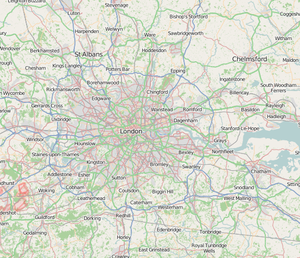
On this page we will draw attention to some interesting examples of places we have mapped, and mapping milestones we have reached, but these are certainly not the only places where mapping is happening. To discover what's happening close to you, take a look at the map and also the pages under Mapping projects where we describe and coordinate our mapping activities on a country by country basis.
UK
London is the birthplace of the OpenStreetMap project. The very first data elements were laid down in Regents Park in the summer of 2004 (See History of OpenStreetMap). Thanks to a well attended London mapping party Jan 2007 and ongoing mapping effort from a large community based in and around London, some excellent progress has been made. London is probably our best example of a collaborative effort, bringing together contributions from many people. It isn't fully mapped yet, but London is one of the worlds biggest cities, so we're doing pretty well, and getting closer all the time.
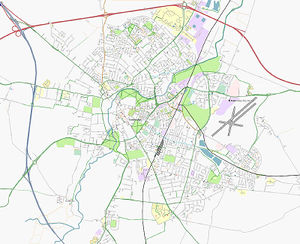
Elsewhere in the UK, various other cities have made even more progress. Cambridge was the first city to be described as 'complete', although in true wiki style, a map is never really complete. We can always continue to make improvements and add more detailed Map Features. But of course it's not just about cities, we aim to map out interconnecting roads/rails, and eventually every little country lane. A good example of this, is the Isle of Wight. This was the location of a weekend-long concerted mapping effort, plus follow up work from one contributor who lives there. It is believed that every road on this 380 km² island has been mapped.
Netherlands
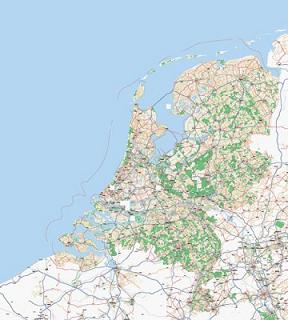
You will also notice a remarkably finished off map of roads covering the entire Netherlands. A mapping agency called AND decided to donate their data to the project, allowing us to import it and release it with our open license. Their data, and the script development effort by our Dutch community, has yielded a fantastic map of the whole country.
Germany
Elsewhere in Europe new sprouts of mapping effort are taking off all the time. Germany deserves special mention, with a very active community of mappers, and lots of OSM developers coming from this country. Likewise Sweden, Norway and Denmark were in on the action early on, but we're seeing a lot of mapping activity in all of the European countries these days (Find your country linked off Mapping Projects)
United States of America
You might expect an Internet collaboration like this to take off in the United States. Well, the situation around free mapping data is rather different in the USA, and rather better, in that all federal government data are released into the public domain. This includes TIGER data, a vector representation of every street and railway in the USA. We found that these data were rather crude and required a lot of clean-up before we were able to import them into our database. These technical challenges, as well as problems around scaling the database to hold these data, have meant that we only recently made progress with importing TIGER data. The cleansed data that OpenStreetMap now offers do have advantages over the raw TIGER data. Now that these data are largely in place, and the project renders maps in the States, it is hoped that OpenStreetMap will attract more American contributors. There is a lot of manual TIGER fixup work to be done, plus gathering of data related to other detailed Map Features, which OpenStreetMap is capable of supporting through wiki-style community contribution. For example, see if a /Railroads wiki is available in your state, and if not, create one (using one of dozens of already existing "seeds") and polish the imported TIGER railway data to a high gloss!
In the fifty states, state-at-a-time statutes regarding "public records" (especially GIS data or geospatial data) often do legally expressly designate a request by a citizen or resident of that state as releasable data, often for free, though sometimes for a nominal duplication cost (the cost of a blank CD-ROM, for example).
In July 2013 an important milestone was declared in the USA: OpenStreetMap's Cycle Map layer is asserted to display a "substantially accurate representation" of the numbered United States Bicycle Route System (USBRS), including both actual and truly proposed routes. (This rendering displays only actual, not proposed routes). While statewide (regional) and local bicycle routing networks continue to emerge and are improved in OSM, the nascent USBRS national numbering is now up-to-date, and has a well-established process to grow with new emerging national bicycle routes. OSM will continue to track proposed and new numbered national bicycle routes across the USA as they develop and are approved by the People for acceptance by AASHTO, the US highway numbering standards association.
Canada
In Canada there are also data available from the government. There are several Canadian government datasets that OpenStreetMap has been granted permission to convert and import as of November 2008. The conversion and import process has commenced in 2009.
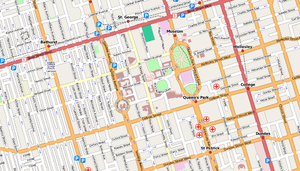
Baghdad
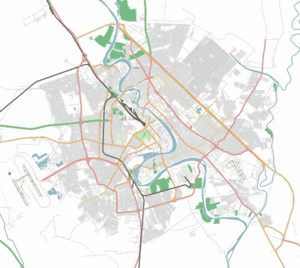
In February 2007 we made a concerted effort to map out the streets of Baghdad. This was an experiment in mapping by remote, making use of Yahoo! Aerial Imagery. As explained in this blog post, OpenStreetMap now has the most comprehensive map of Baghdad among any of the web mapping services, but we are calling out for more contributions from people in these locations to help refine the rough road-layout information we have started with.
Haiti
In January 2010, an earthquake struck the Island of Haiti, leading to a very efficient mapping effort by mappers all around the world to quickly convert satellite images into maps that could be used in the field by rescue teams. See WikiProject_Haiti
Equally in other developing world locations, there is great potential for our maps to make a difference. In some regions the availability of a good map could help massively with management of supplying basic food/water/health supplies, or development of infrastructure. We need to work to make use of Yahoo! Aerial Imagery and other data-sources in whatever way we can, but contributions from local people on the ground will be very welcome.
Find out more about mapping the place where you live, under Mapping Projects.